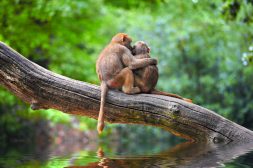Definition
noun, plural: tapeta
(botany) A layer of nutritive cells within the sporangium, providing nutrition for growing spores of flowering plants
(anatomy, zoology) A membranous layer of tissue, as in tapetum lucidum
(neuroanatomy) A thin layer of fibers of corpus callosum in the lateral wall of the temporal and occipital horns of the lateral ventricle
Supplement
In botany, the tapetum may pertain to the layer of cells within the sporangium, especially the anther. It helps provide nutrition for growing spores. It helps in the formation of pollen wall as well as in the synthesis of callase enzyme. It is found between the sporangenous tissue and the anther wall. There are two major types of tapeta, i.e. secretory and plasmodial tapeta.
In anatomy, the tapetum may pertain to a membraneous layer of tissue. For instance, the tapetum lucidum is a layer of tissue in the eye of many vertebrates, e.g. cats, dogs, birds, fish, etc. but not including humans. This membrane makes the eyes of these animals shine or glow when illuminated in the dark. It is found behind or within the retina. It reflects visible light back to the retina so that the available light to the photoreceptors is increased. It helps in having a superior night vision for these animals, especially nocturnal animals. It helps these animals to see in dimmer light.
Another example is the tapetum of corpus callosum. In neuroanatomy, the term tapetum pertains to the membranous layer that extends laterally on either side into the temporal lobe and is connected to the corpus callosum.
Word origin: Latin tapetum (“tapestry”)
”Synonym(s):
- Fielding’s membrane (neuroanatomy)
- membrana versicolor (neuroanatomy)
See also:
Related term(s):
Related form(s):







